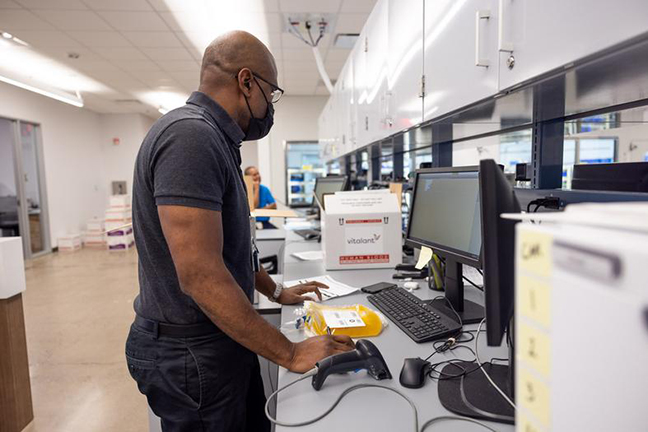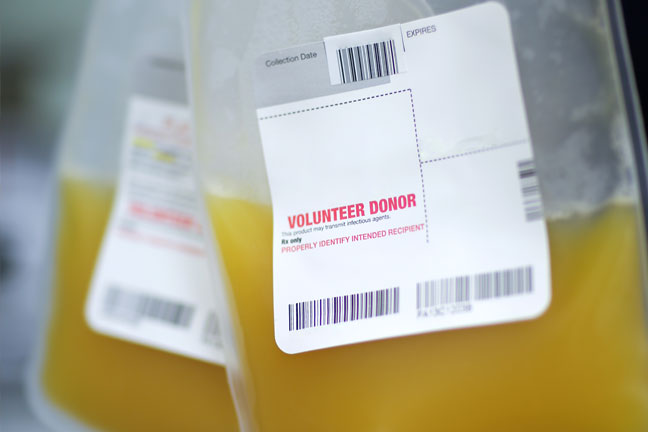Platelets, or thrombocytes, are small, colorless cell fragments in our blood that form clots and stop or prevent bleeding. Platelets are made in our bone marrow, the sponge-like tissue inside our bones. Bone marrow contains stem cells that develop into red blood cells, white blood cells, and platelets.
Platelets control bleeding in our bodies, so they can be essential to surviving surgeries such as organ transplant, as well as fighting cancer, chronic diseases, and traumatic injuries. Donor platelets are given to patients who don’t have enough of their own, a condition known as thrombocytopenia, or when a person’s platelets aren’t working correctly. Raising the patient’s blood platelet count reduces the risk of dangerous or even fatal bleeding.
A low platelet count occurs when:
- A person’s bone marrow is damaged and unable to make enough of its own platelets. This can be caused by certain cancers, such as Leukemia – and it can also be caused by cancer treatments.
- Platelets have been lost due to severe bleeding, such as following a traumatic injury or during surgery.
- Platelets have been destroyed by autoimmune diseases, certain medicines, infections, or other conditions.
- The patient’s spleen, which filters the blood stream, removes too many platelets.

Symptoms of low platelets include bruising easily and unusual bleeding, such as excessive bleeding from a small cut or blood in urine or stool.
Low platelet count is a major side effect of cancer treatment. Some types of chemotherapy can damage bone marrow, reducing platelet production. (This damage is usually temporary.) Other times, the cancer itself causes the problem. Leukemia and lymphoma can invade the bone marrow and prevent the patient’s body from producing the platelets it needs.
Without a platelet transfusion, these cancer patients face life-threatening bleeding.

Uses for Platelets
Platelets are used to treat a number of different medical conditions but are most frequently used to help cancer patients receiving treatment. Platelets are also used to treat low blood platelet counts (thrombocytopenia) or platelet dysfunction, to treat active platelet-related bleeding, or as prophylaxis in those at serious risk of bleeding. Some of the types of patients that need platelets include trauma, burn and surgery patients to assist with blood clotting and stop internal and external bleeding.
Compatible Blood Components for Transfusion
The following table, defined by type of component, show the appropriate donor unit ABO Group and Rh Type that will be compatible with the patient/recipient:
| Recipient’s ABO Group | Component ABO Group |
|---|---|
| O | O, A, B, OR AB |
| A | A OR AB |
| B | B OR AB |
| AB | AB |
*NOTE: If group compatible platelets are not available, any type can be given to a patient > 2 years of age.
| Recipient D Type | Red Cell Component D Type | Platelet Component D Type |
|---|---|---|
| D Positive | D Positive or Negative | D Positive or Negative |
| D Positive or Negative | D Negative | D Negative Preferred |
For more information about our products, for example the AABB Technical Manual and the Circular of Information for Blood and Blood Components visit the AABB website.



